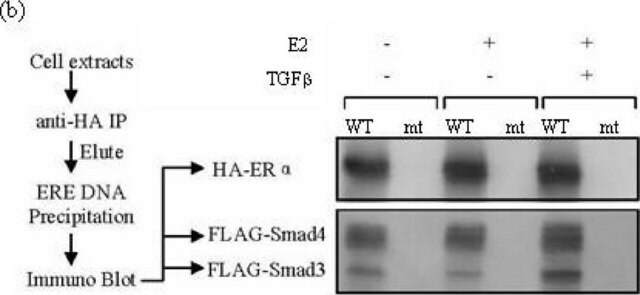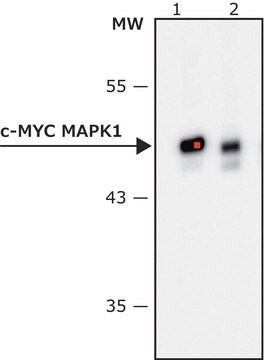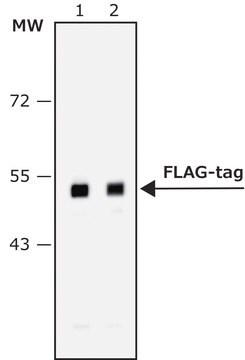12013819001
Roche
Anti-HA-Peroxidase, High Affinity
from rat IgG1
Sinónimos:
antibody
About This Item
Productos recomendados
biological source
rat
Quality Level
conjugate
peroxidase conjugate
antibody form
purified immunoglobulin
antibody product type
primary antibodies
clone
clone 3F10, monoclonal
form
lyophilized (clear, colorless solution after reconstitution)
packaging
pkg of 25 U (25 μg)
manufacturer/tradename
Roche
isotype
IgG1
epitope sequence
YPYDVPDYA
storage temp.
2-8°C
Categorías relacionadas
General description
Specificity
This epitope is also recognized in fusion proteins regardless of its position (N-terminal, C-terminal or internal).
Immunogen
Application
- Use Anti-HA-Peroxidase, High Affinity for the detection of HA-tagged recombinant proteins using: ELISA
- Western blot
Preparation Note
Working concentration: The working concentration of conjugate depends on application and substrate.
The following concentrations should be taken as a guideline:
- Dot blot: 50 mU/ml
- ELISA: 25 mU/ml
- Western blot: 50 mU/ml
Reconstitution
Rehydrate for 10 min prior to use.
Other Notes
¿No encuentra el producto adecuado?
Pruebe nuestro Herramienta de selección de productos.
signalword
Warning
hcodes
Hazard Classifications
Skin Sens. 1
Storage Class
11 - Combustible Solids
wgk_germany
WGK 1
flash_point_f
does not flash
flash_point_c
does not flash
Certificados de análisis (COA)
Busque Certificados de análisis (COA) introduciendo el número de lote del producto. Los números de lote se encuentran en la etiqueta del producto después de las palabras «Lot» o «Batch»
¿Ya tiene este producto?
Encuentre la documentación para los productos que ha comprado recientemente en la Biblioteca de documentos.
Nuestro equipo de científicos tiene experiencia en todas las áreas de investigación: Ciencias de la vida, Ciencia de los materiales, Síntesis química, Cromatografía, Analítica y muchas otras.
Póngase en contacto con el Servicio técnico








